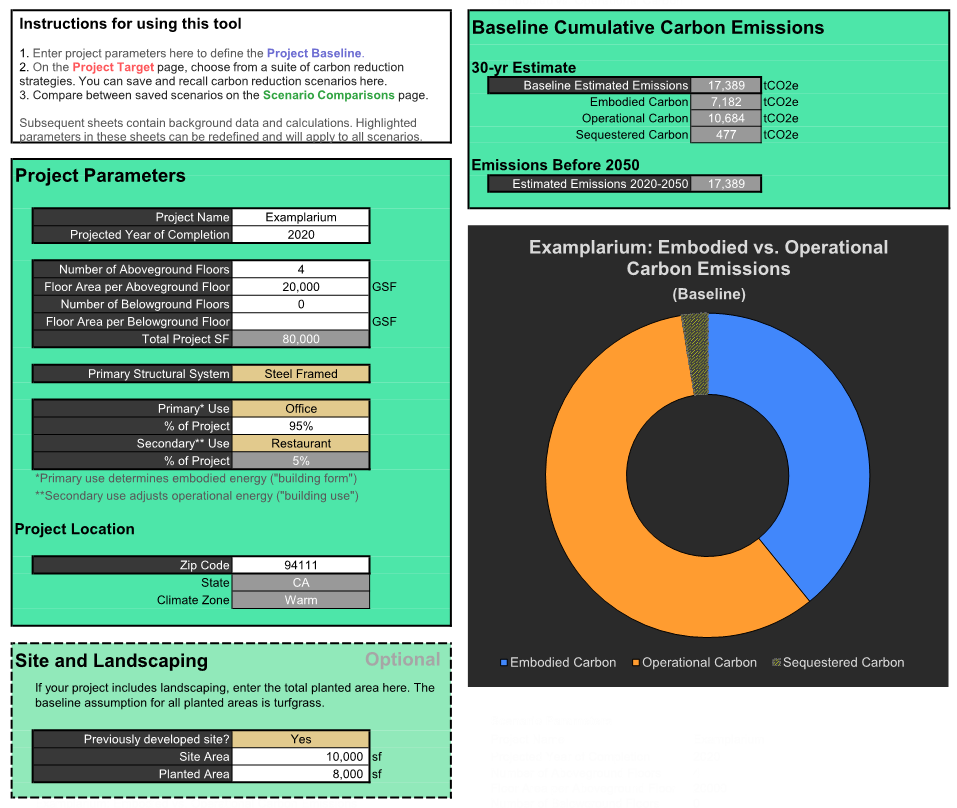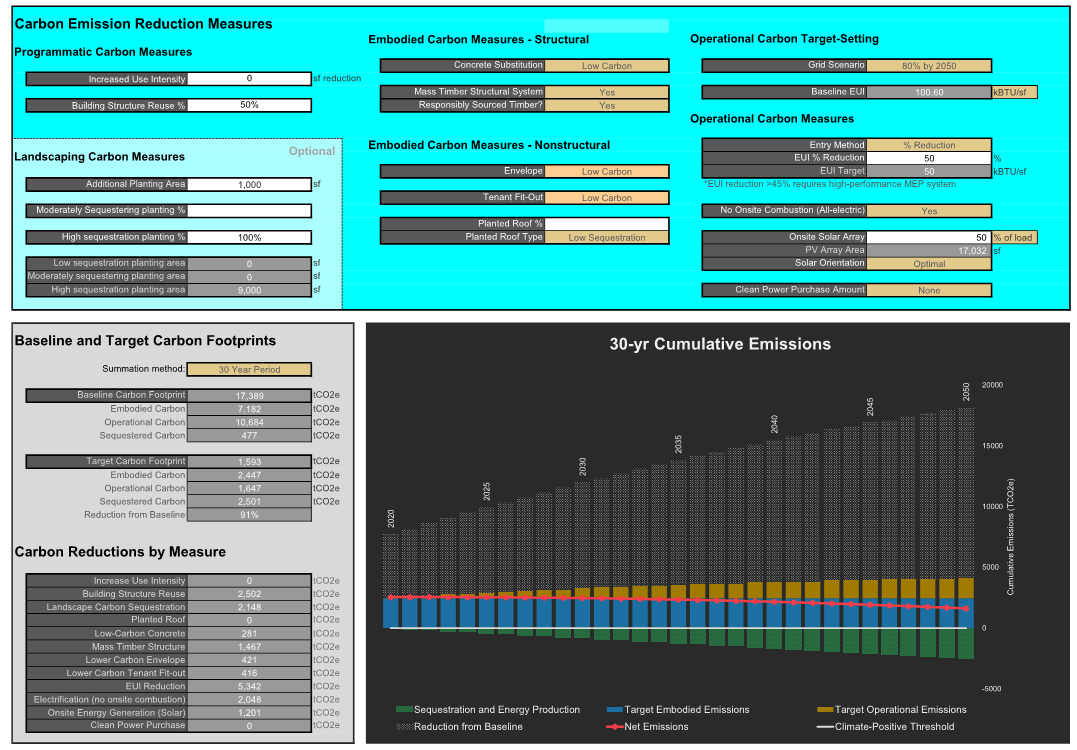Introducing EHDD’s Early Phase Carbon Assessment Tool
Published: Sept. 23, 2020
We recently introduced our vision and call to action for Climate Positive design and advocacy. Today, I am pleased to describe a big step we are taking to execute this vision with the internal release of the EPIC tool. EPIC stands for “Early Phase Integrated Carbon assessment” and it fills a critical gap. It allows our designers — and eventually, our clients – to set carbon targets and identify the most impactful measures early in the project process. We see this as complementary to life-cycle assessment and product optimization tools like Tally and EC3, which are crucial later in design.
Why is the EPIC Tool so essential?
When designing for carbon neutrality, we need to keep two critical elements in mind: first, the amount of potential savings we can achieve with each reduction measure, and second, the time frame of those savings. Due to the urgency of climate change, we need to prioritize strategies that produce considerable savings fast. The EPIC tool brings together operational and embodied carbon impacts and potential sequestration measures, on a level playing field and measured over a project life cycle so we can see more clearly where we get the biggest, and most immediate, bang for the buck.
There is also urgency around when actionable information is available to designers and building owners. The carbon footprint trajectory is cast very early in the project timeline with a handful of critical decisions: how big is the project? How much of the program is in an existing structure? What is the structural system? Is it based on all-electric systems?
Whole building life cycle assessment (WBLCA) is essential for project accounting and fine-tuning, but the specificity it requires means it is typically completed towards the end of the schematic design phase. Usually, the decisions noted above have already been made at that point. The EPIC tool provides high level benchmarking and target-setting guidance at the earliest moments in project conceptualization to show designers and owners what is possible and guide critical decisions.
Two snapshots of the tool are shown. The first tab defines the project baseline using easily known parameters including project size, type, baseline structural system, and location. The second tab introduces a range of carbon reduction options, and graphically shows the resultant path to carbon neutrality. In any scenario, some amount of sequestration (shown in green below the line) through the use of biogenic material (ex. wood), site planting, and/or net-positive energy is necessary to get there.
For example, for our UCSF Clinical Sciences Building renovation project, set to open later this year, the decision to reuse the existing historic structure proves to be the most impactful reduction when I entered the project data into the tool. But reuse was not the only option on the table initially. This tool would have helped confirm the decision to renovate. It also puts into context the carbon benefit of energy efficiency and the PV installation. It also shows the impact of continued reliance on a mixed-fuel central plant instead of electrification.
The EPIC tool is currently in the BETA phase as we employ it on our current work at EHDD. We look forward to using it, breaking it, refining it, and sharing it more broadly with our community.
Interested in EPIC? Use the tool for free at epic.ehdd.com.

